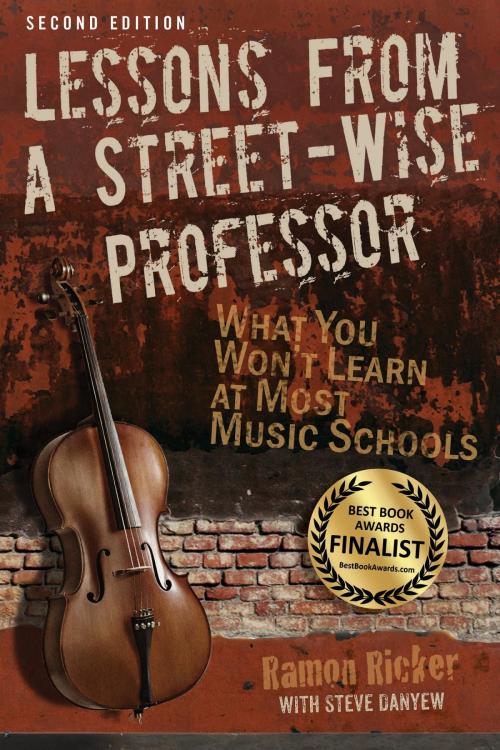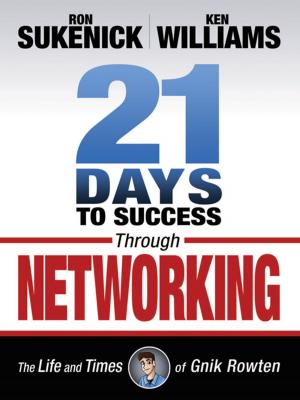Lessons from a Street-Wise Professor
What You Won't Learn at Most Music Schools
Nonfiction, Entertainment, Music, Business & Technical, Business Aspects, Business & Finance, Entrepreneurship & Small Business, Entrepreneurship| Author: | Ramon Ricker, Steve Danyew | ISBN: | 9780982863947 |
| Publisher: | Soundown, Inc. | Publication: | November 19, 2018 |
| Imprint: | Soundown, Inc. | Language: | English |
| Author: | Ramon Ricker, Steve Danyew |
| ISBN: | 9780982863947 |
| Publisher: | Soundown, Inc. |
| Publication: | November 19, 2018 |
| Imprint: | Soundown, Inc. |
| Language: | English |
Lessons from a Streetwise Professor: What You Won’t Learn at Most Music Schools was first published in 2011. It’s a book that discusses contemporary issues in the real world of music, and the fact is, much has changed since then. An update was needed, so voilà—the second addition. For this edition, I asked Steve Danyew to contribute. He’s a former colleague at the Eastman School, and as a young person, he’s up on all the latest and greatest happenings in the tech world. He’s also a fine composer whose career is blossoming now.
What has changed in the last seven years that affects musicians? Certainly, the use of video has gone through the roof, not to mention social media, email marketing, Facebook ads, boosted posts, GoogleAdWords, and the list goes on. More and more musicians now publish their own music and recordings. The Internet has made it possible for them to side-step the big publishing houses and record labels. It’s pretty much a “given” that musicians who are building solo careers must have a strong web presence. They connect with their fans and often use crowdfunding to raise money for projects. And since this is the real world in which we live, we have to talk about money. Changes made by Congress have impacted health care and taxes. Is it better or worse? The answer is, it depends. Each individual’s personal circumstance will answer that question. Then there is the manner in which musicians are compensated for their creative work—copyright, royalties and now-digital royalties are being reexamined. These subjects are all addressed in this second edition.
What hasn’t changed in the real-world music industry is the human dynamic. Audiences still stand and applaud a performance. They don’t applaud their sound systems or playback devices. They appreciate and recognize excellence and quality. That is really the essence of this book. In my mind, in order to find success in music two conditions must dominate:
-
Do something you love and commit to quality; and
-
Get your message out and get noticed.
Here’s hoping the pages in this second edition will help aspiring musicians and old pros alike do just that.
Ray Ricker
Lessons from a Streetwise Professor: What You Won’t Learn at Most Music Schools was first published in 2011. It’s a book that discusses contemporary issues in the real world of music, and the fact is, much has changed since then. An update was needed, so voilà—the second addition. For this edition, I asked Steve Danyew to contribute. He’s a former colleague at the Eastman School, and as a young person, he’s up on all the latest and greatest happenings in the tech world. He’s also a fine composer whose career is blossoming now.
What has changed in the last seven years that affects musicians? Certainly, the use of video has gone through the roof, not to mention social media, email marketing, Facebook ads, boosted posts, GoogleAdWords, and the list goes on. More and more musicians now publish their own music and recordings. The Internet has made it possible for them to side-step the big publishing houses and record labels. It’s pretty much a “given” that musicians who are building solo careers must have a strong web presence. They connect with their fans and often use crowdfunding to raise money for projects. And since this is the real world in which we live, we have to talk about money. Changes made by Congress have impacted health care and taxes. Is it better or worse? The answer is, it depends. Each individual’s personal circumstance will answer that question. Then there is the manner in which musicians are compensated for their creative work—copyright, royalties and now-digital royalties are being reexamined. These subjects are all addressed in this second edition.
What hasn’t changed in the real-world music industry is the human dynamic. Audiences still stand and applaud a performance. They don’t applaud their sound systems or playback devices. They appreciate and recognize excellence and quality. That is really the essence of this book. In my mind, in order to find success in music two conditions must dominate:
-
Do something you love and commit to quality; and
-
Get your message out and get noticed.
Here’s hoping the pages in this second edition will help aspiring musicians and old pros alike do just that.
Ray Ricker















